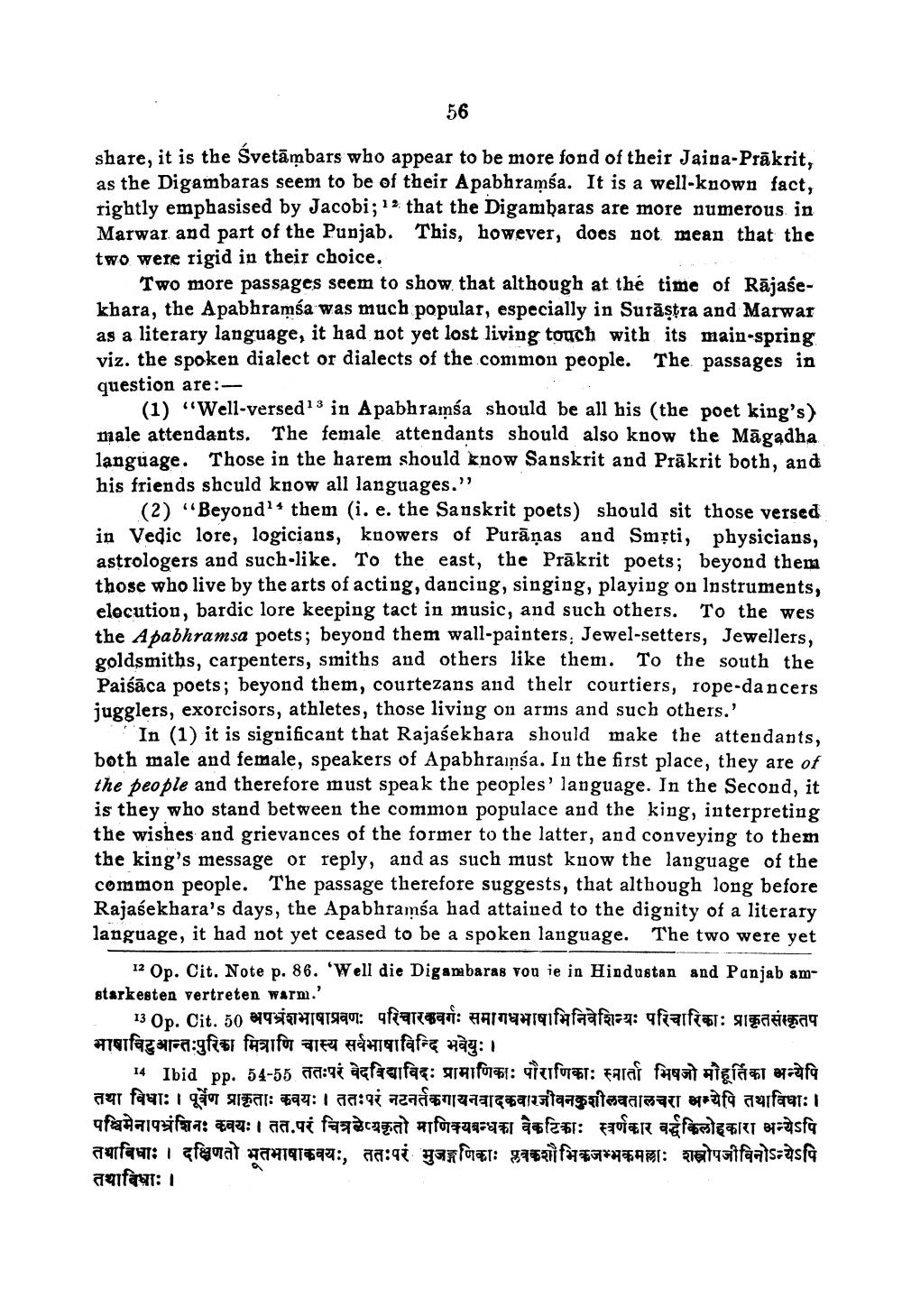________________
56
share, it is the Śvetambars who appear to be more fond of their Jaina-Prakrit, as the Digambaras seem to be of their Apabhramsa. It is a well-known fact, rightly emphasised by Jacobi; 12 that the Digambaras are more numerous in Marwar and part of the Punjab. This, however, does not mean that the two were rigid in their choice.
Two more passages seem to show that although at the time of Rajasekhara, the Apabhramsa was much popular, especially in Suraṣṭra and Marwar as a literary language, it had not yet lost living touch with its main-spring viz. the spoken dialect or dialects of the common people. The passages in question are:
(1) "Well-versed 13 in Apabhramśa should be all his (the poet king's) male attendants. The female attendants should also know the Magadha language. Those in the harem should know Sanskrit and Prakrit both, and his friends should know all languages."
(2) "Beyond them (i. e. the Sanskrit poets) should sit those versed in Vedic lore, logicians, knowers of Puranas and Smrti, physicians, astrologers and such-like. To the east, the Prakrit poets; beyond them those who live by the arts of acting, dancing, singing, playing on Instruments, elecution, bardic lore keeping tact in music, and such others. To the wes the Apabhramsa poets; beyond them wall-painters, Jewel-setters, Jewellers, goldsmiths, carpenters, smiths and others like them. To the south the Paiśāca poets; beyond them, courtezans and thelr courtiers, rope-dancers jugglers, exorcisors, athletes, those living on arms and such others.'
In (1) it is significant that Rajasekhara should make the attendants, both male and female, speakers of Apabhramsa. In the first place, they are of the people and therefore must speak the peoples' language. In the Second, it is they who stand between the common populace and the king, interpreting the wishes and grievances of the former to the latter, and conveying to them the king's message or reply, and as such must know the language of the common people. The passage therefore suggests, that although long before Rajasekhara's days, the Apabhramśa had attained to the dignity of a literary language, it had not yet ceased to be a spoken language. The two were yet
12 Op. Cit. Note p. 86. 'Well die Digambaras vou ie in Hindustan and Panjab amstarkesten vertreten warm.'
13 Op. Cit. 50 अपभ्रंशभाषाप्रवणः परिचारकवर्गः समागधभाषाभिनिवेशिन्यः परिचारिकाः प्राकृतसंस्कृतप faga:yfte fazıfa area admonfàfèz Hàg: 1
14 Ibid pp. 54-55 ततः परं वेदविद्याविदः प्रामाणिका: पौराणिका : स्मार्ता भिषजो मौहूर्तिका अन्येपि तथाविधाः । पूर्वेण प्राकृताः कवयः । ततः परं नटनर्तकगायनवादकवारजीवनकुशीलवतालचरा अभ्येपि तथाविधाः । पश्चिमेनापभ्रंशिनः कवयः । तत. परं चित्रलेप्यकृतो माणिक्यबन्धका वैकटिकाः स्वर्णकार वर्द्धकिलोहकारा अन्येऽपि तथाविधाः । दक्षिणतो भूतभाषाकवयः, ततः परं मुजङ्गणिकाः लवकशौभिकजम्भकमल्लाः शस्त्रोपजीविनोऽन्येऽपि तथाविधाः ।




